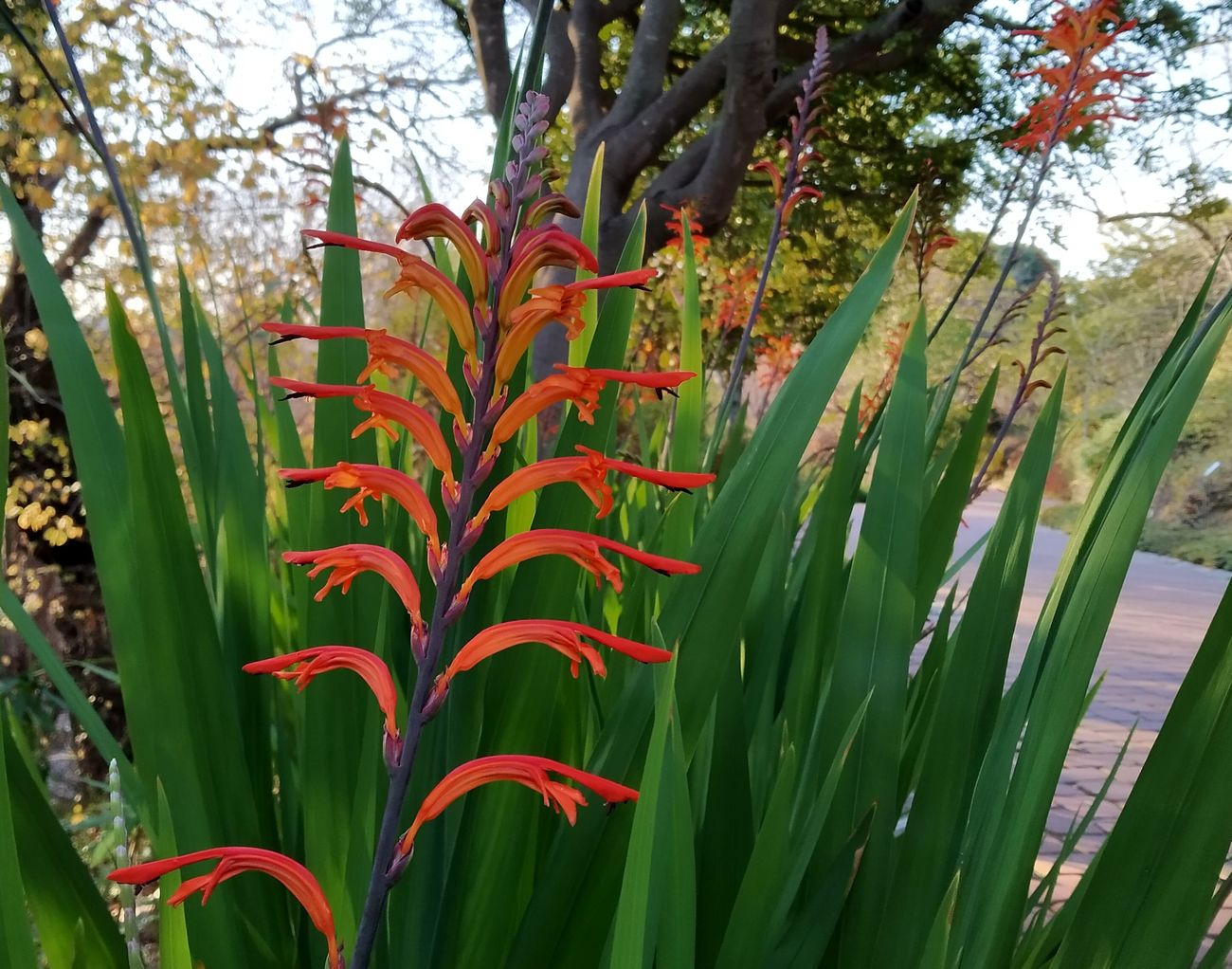Chasmanthe floribunda
Scientific name: Chasmanthe floribunda (Salisb.) N.E.Br.
Family: Iridaceae
Common name: Adam's Rib, African Cornflag, Orange Cobra Lily, Pennants
Adam's Rib is a plant of purely ornamental use, due to the striking red to orange flowers; they are placed on both sides of an erect stem, in a spike-like inflorescence; the tepals are arched and are welded at their base, giving them a tubular shape. Birds find it very attractive and this helps pollination.
This plant is a bulbous herbaceous plant that can reach more than one metre in height. The leaves disappear after winter flowering, and then the bulb resprouts. Its leaves are sword-shaped and measure about 3 to 4 cm wide and half a metre long. The fruit is a flattened globular capsule, 10 to 15 cm long, which reveals the outline of the seeds, each bearing up to 12 bright orange-red seeds.
The name Chasmanthe comes from the Greek, anthos meaning flower, and chasme, open, alluding to the fact that it has very open flower parts. This genus has only three species, and they are all South African. The species in question grows in rocky areas and along coastal mountains, and owes its specific name to its generous flowering. It is also known as cobra lily and can be seen on the Round the World route in 80 Trees of La Concepción. It is vigorous, drought resistant and grows well in sun or semi-shade. It appears in a book of illustrations by Jacques-Phillipe Cornut in 1635 under the name of red-flowered gladiolus of Africa, and until the beginning of the 19th century it was confused with the smaller Chasmanthe aethiopica.

